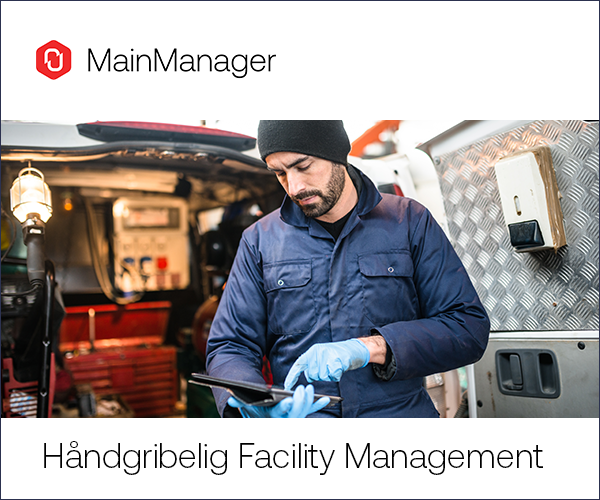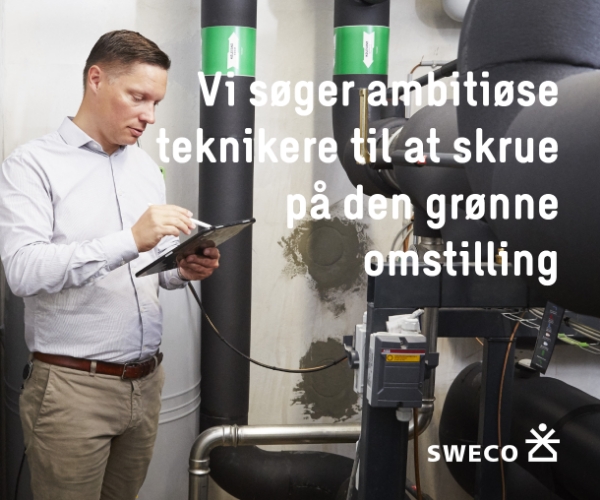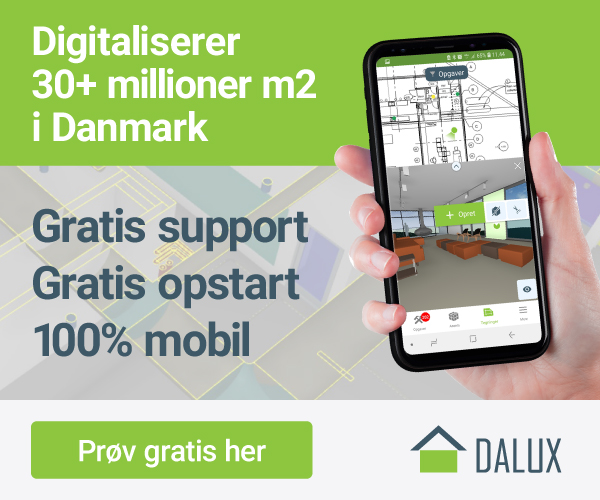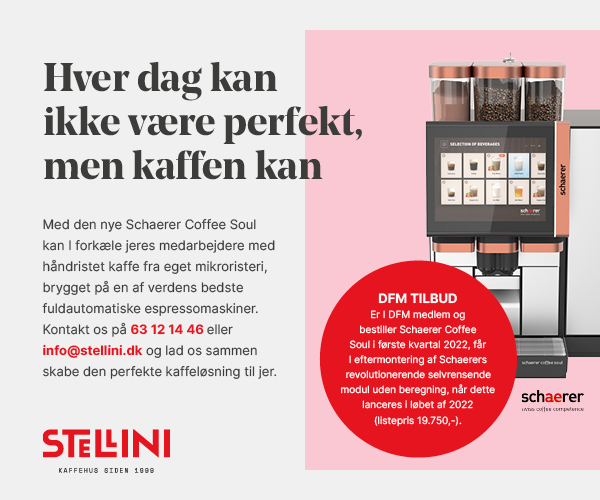Data is not the new oil – experience is!
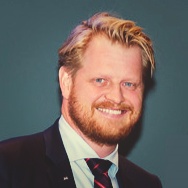
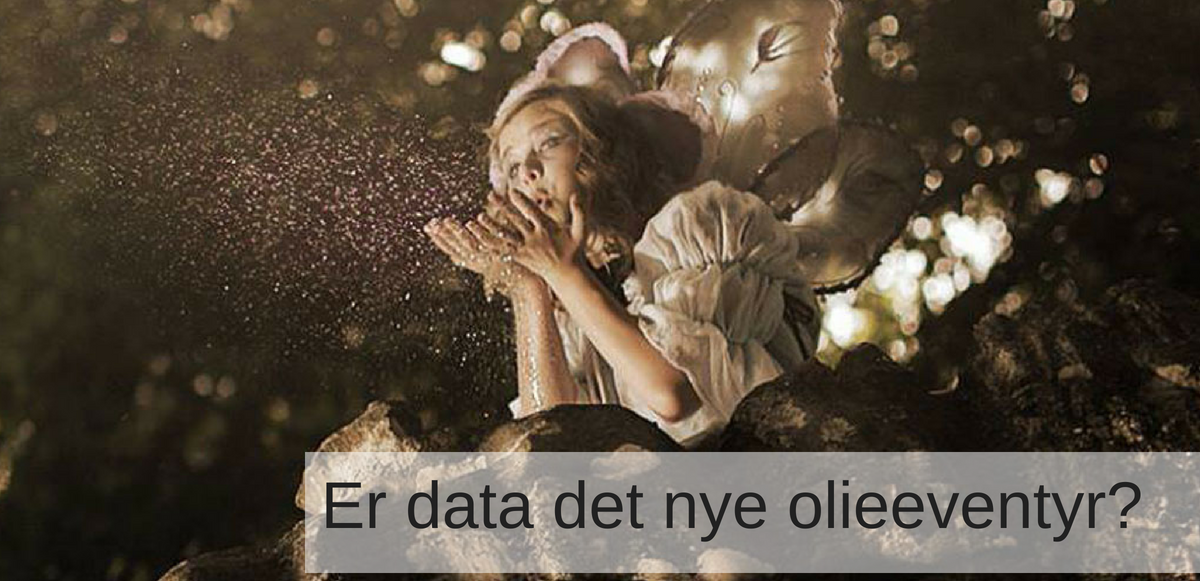
Før var verdens største virksomheder fra olieindustrien. Idag er verdens største virksomheder ikke længere olieselskaber, men virksomheder, der udvinder og forarbejder data - de kan, ligesom de store olieselskaber for 100 år siden ændre verdenen som vi kender den for altid.
Ifølge Peter Ankerstjerne er data ingenting uden erfaring. Data danner et godt grundlag for at træffe beslutninger og giver en indsigt, men det er erfaringen, der driver værket. Erfaringen er den vi får fra den data, vi indsamler. Det var en af de mange læringspunkter som Peter Ankerstjerne trak frem på ”Den globale FM Café”, der løb af stablen for første gang den 20 juni. I artiklen "Data is not the new oil – experience is!" vil du få lejlighed til at få uddybet pointerne fra Peters indlæg.
Læs med her:
Data is not the new oil – experience is!
Ok, I get it, the term “data is the new oil” was first coined in the mid-2000 and it refers to the notion that data should be considered a “natural resource” just like crude oil. It’s valuable, but if unrefined it cannot really be used and therefore it must be broken down, analyzed, processed to have value. As we do so, the access of data and the use of data analytics sets the new direction for our society and the wealth creation – just like oil did back in the days. Data, and especially digitalization, AI and robotics has become the focal point for the latest industrial revolution (industry 4.0).
So, there is no doubt, data is important, and it does provide the foundation on which we make decisions and develop our society. But I would argue, that it is the experiences, which will keep the engines running today and into the future. It is experiences that provides the energy, passion and engagement, which will fuel the development of our businesses and then ultimately the society.
The experience economy is a term, which has been around since the late ‘90’ies and as such it is much older than the afore mentioned data related topics. Nevertheless it is still relevant, and we are still learning how we can manage experiences in our workplaces, through our products and services and towards our customers and the communication that ties it together. Actually the experience economy has never been more relevant than it is today.
Pine and Gilmore wrote their famous HBR article (and book); Welcome to the Experience Economy in 1998: To realize the full benefit of the experiences economy, businesses must deliberately design engaging experiences that command a fee. This transition from selling services to selling experiences will be no easier for established companies to undertake and weather than the last great economic shift, from the industrial to the service economy. Unless companies want to be in a commoditized business, however, they will be compelled to upgrade their offerings to the next stage of economic value.
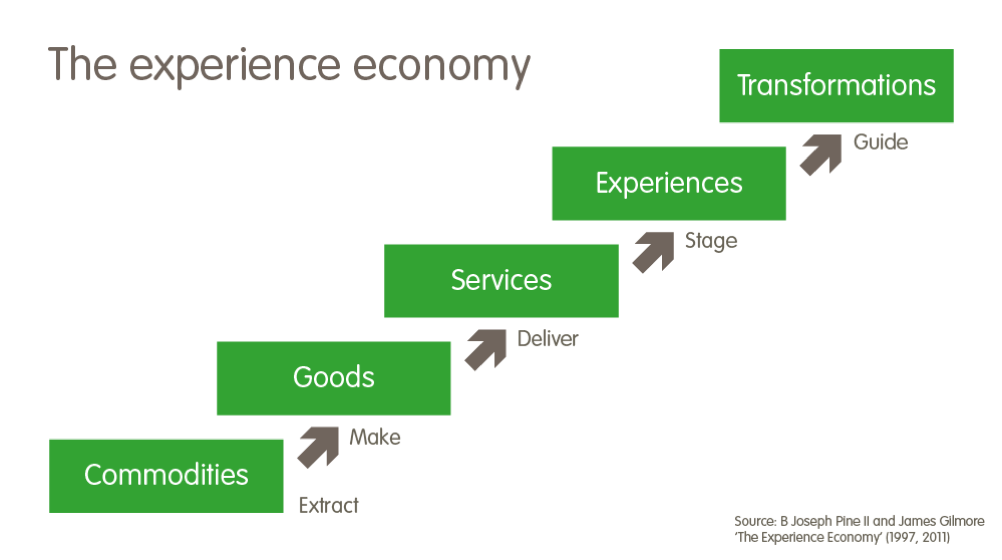
Pine and Gilmore later refined their model to include the next phase in the economic value model to include transformation (The Experience Economy, 2011). Businesses need to create memorable events for their customers, and that memory itself then becomes the product — the ‘experience’. They also believed that more advanced ‘experience’ businesses can begin charging for the value of the ‘transformation’ that their experience offers.
There is no doubt that working with experiences, which can even become transformational for a business must be the holy grail for any organization who aims to create value in the relationship with their customers. Naturally, the experiences will not only have to be relevant to their customers (and probably even more so to the employees) but help to transform and redefine their business, grow the revenue and drive innovation and change.
Staging experiences in a workplace context
Something interesting is happening in the Facility Management and Corporate Real Estate (FM/CRE) sector these years with the focus on staging experiences and driving transformation. Every big company is trying to get their hands (and heads) around the workplace experience and making it an integral part of their value proposition. Labelling such a concept differently; workplace-, service-, human-, or employee experiences etc. the outcome it still relatively similar. Developing an ability to stage experiences within the workplace which will bring it to live and provide a better and more holistic experience for the employees who work there, and for the guests visiting. The workplace experience should of course be aligned with, or even leveraging, the strategy, the brand and especially culture of the organization.
This development in the FM/CRE market is providing an interesting shift, which we have only seen the early emergence of. Focus is moving from cost optimization (how cheap can you manage your facilities) to a return on investment in people (how can you increase the engagement and productivity of your workforce). Responsibility is moving away from the finance department over to the HR department, where focus is centered around the ability to create attractive working environments, where employees will want to come to work – not because they have to, but because they want to as it supports their ability to work effectively, socialize and have a better work-live balance.

Human Resource departments are re-defining what “new normal” is in the workplace by creating memorable employee experiences for employees. These range from working with Real Estate executives to design the space employees work in, providing smart technologies employees access at work, and crafting emotional connections with employees in the workplace.
No doubt, that this development spans a far greater breadth of engagementwith employees and provides entirely new demands for the HR professionals. Also, it calls for a more conscious and sharper brand engagement as the workplace become both the visual and emotional expression of the corporate brand.
Brand should be seen as an external reflection of the internal culture. A well-branded, integrated workplace should tell a story about who the company is, what they do and why it matters. It provides the workforce a reason to believe and empowers them to feel valued as part of the business goals and mission. The people within the organization represent the living experience behind the brands and differentiate how the brand is perceived externally. When people’s experiences match their expectations loyalty increases
As we spend most of our time as adults at work, it does makes sense to be more people-oriented around the workplace design and providing a more compelling workplace experience. It is not only a question of transferring the responsibility to the HR team or tweaking a few HR practices to include workplace design. Rather it is one that is woven into the overall approach to the business of the employment of others where HR work closely with the FM/CRE teams. The Irish Management Institute (IMI) has come up with five key elements of work which ideally should be built into one seamless experience for the employees. When this happens, a more compelling workplace experience can positively impact employee engagement and business outcomes:
- Build More Emotional Connection:
- Improve the Intellectual Experience:
- Enhance the Physical Experience:
- Upgrade the Technological Experience:
- Promote the Culture Experience:
Better workplace experiences tap the engagement potential of any company’s workforce, whether you are a global corporation or a small growth oriented business!
Coworking space – putting experience first!
You cannot discuss the workplace experience trend without also addressing coworking. The interesting thing about coworking spaces, is, that its not only about the physical place, but about establishing a sense of community first. Its benefits can already be experienced outside of the actual office space and coworking is really seen as a disruptor to the traditional corporate real estate market.
The coworking trend started out as membership-based workspaces where diverse groups of freelancers, remote workers, and other independent professionals could work together in a shared, communal setting. But especially over the last couple of years this as changed as coworking now also covers corporate spaces.
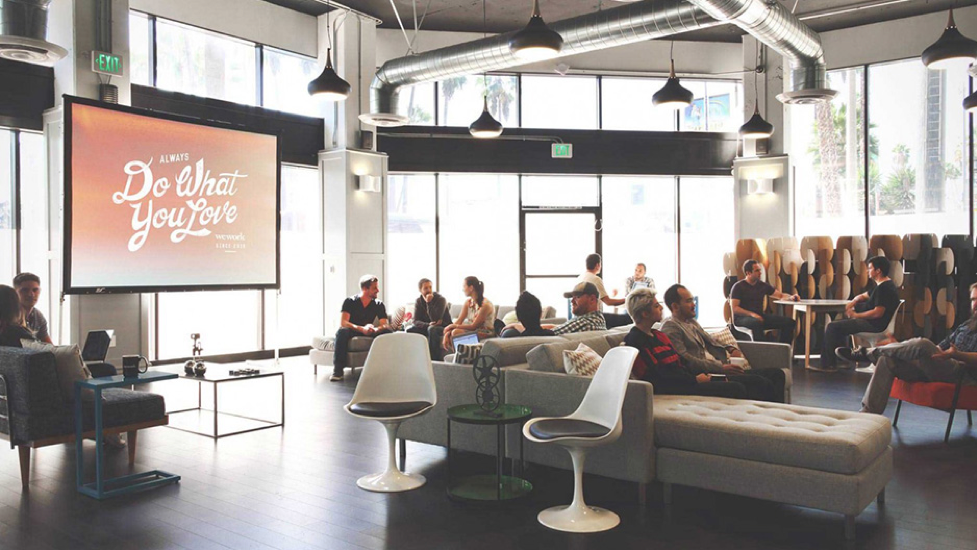
WeWork have been pioneers of coworking spaces for a decade and they are now increasingly focusing on establishing corporate environments as coworking spaces. They are in fact a proven illustration of how the shift from the experience- to the transformation economy is working, as Wework is trying to transform the typical office space. The IBM case is a great example of this, where WeWork helped IBM to fuel collaboration and innovation with key clients through establishing an IBM dedicated coworking space in the US.
But what is it that makes coworking spaces so seemingly effective? To find out, HBR interviewed several coworking space founders and community managers, and surveyed several hundred workers from dozens of coworking spaces around the U.S.
In general, people who use coworking spaces see their work as meaningful. Aside from the type of work they’re doing the people surveyed by HBR reported finding meaning in the fact that they could bring their whole selves to work. They came up with 3 main factors:
- First, unlike a traditional office, coworking spaces consist of members who work for a range of different companies, ventures, and projects. Because there is little direct competition or internal politics, they don’t feel they have to put on a work persona to fit in. Working amidst people doing different kinds of work can also make one’s own work identity stronger.
- Second, meaning may also come from working in a culture where it is the norm to help each other out, and there are many opportunities to do so.
- Lastly, meaning may also be derived from a more concrete source: The social mission inherent in the Coworking Manifesto, an online document signed by members of more than 1,700 working spaces.
There is no doubt that the work by HBR proves that the combination of a well-designed work environment and a well-curated work experience are part of the reason people who cowork demonstrate higher levels of thriving than their office-based counterparts. Now the challenge is to make sure the we see coworking as part of an integrated work approach, which also includes a corporate office, home-working and working on the fly – each have their own separate profile and purpose and each have to be considered part of the “new normal” in terms of how and where we work.
Using Service Design to elevate the experience
How can organizations optimize the impact of their workplace experience?
You can spend a lot of money designing the most beautiful and effective reception in the world, but if the behavior and attitude of the staff manning the reception, the receptionists, are not up to standard, it will not leave you with a positive lasting impression. So, we need to work with Service Design (or as Disney calls it; Architected Service Experiences) to bring the workplace to live – only via engaging the service staff, will you be able to provide an integrated experience which leverages both the design and esthetics of a workplace with the behavior and service quality of the people working there.
The Service Design discipline calls for capturing in a journey map the emotions felt by the end-user at each touchpoint in the work journey. This is because we know that end-users are most likely to remember how brands make them feel over the particulars of a series of service interactions. Design Thinking uses creative strategies to create compelling experiences that customers will remember—and be delighted by.
Service Design actively involves customers, employees, and stakeholders in the creative aspects of developing service to deal with consistent and seamless experience across channels around the intersection of people, environment, process, policy, procedures, practice and systems. The front stage view encompasses all what the business does that customers can see, hear, feel and touch. The backstage view comprises of things a business does but is invisible to the customer, but still critical to enable the experience. When it comes to touchpoints, we need to consider the two-way digital, human, physical and sensory interactions with the organization.
The key is to design the front stage and back stage from the outside in perspective, to reduce complexity, uncover opportunities and simplify the organization. Often this is a case for a cultural change initiative and change in thinking mindset to shape experiences for solid business outcomes.
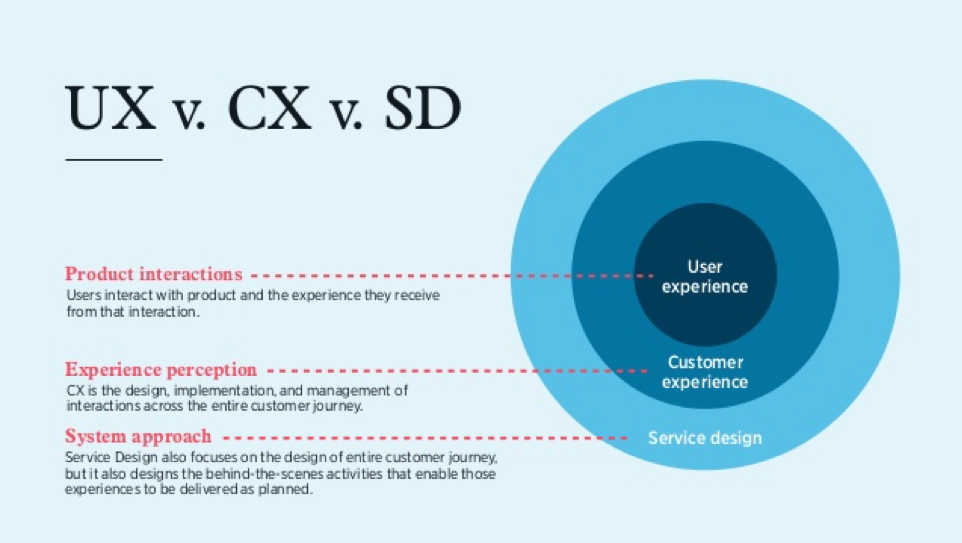
Service Design thinking drives results because it recognizes an important view of business success: that end-user should be at the center of everything we do. In some ways, Service Design thinking isn’t simply a framework— it’s a culture that nurtures agile decision-making and customer-centric ways of doing business. It is important that you combine the strategic focus with the designer focus. As strategy ideally should provide the context and the design process should focus on creating breakthrough experiences going beyond digital.
But, to bring the point back to the beginning of the article and to our discussion of data vs. experiences. Thanks to social and digital technologies, customer behavior, attitudes and motivations continue to change. As the dialogue evolve, design thinking will only grow in importance in the decades ahead. Consequently, the need to build empathy for end-users and understand work (and customer) journeys will become even more crucial. Everyone working with services, from the CTO to the UX designers, need to access and use customer intelligence at every step of the process. Engaging directly with the people you’re designing for is a necessary step in developing deep empathy and building better products and services for your customers using relevant data-points as the foundation for decision and change.
For more information consult IFMA and especially the Workplace Evolutionary (WE) Community. Also together with Jeffrey Scott Saunders from the CIFS (Copenhagen Institute for Future Studies) we have conducted this webinar together with CoreNet Global. Or check out episode 49 of FM Innovator Podcast series, the Workplace Matters Metacast episode 18or the Constructrr Podcast Episode "Workplace Revolution".
Finally the Stoddart Review is also (always) a great source of inspiration for this topic.
I forhold til Facility Management rejser det spørgsmålet, om hensigtsmæssige bygninger kan bidrage til menneskers sundhed og trivsel og i givet fald hvordan og i hvilket omfang? Desuden, hvad kræver det at skabe sunde arbejdspladser og arbejdsomgivelser samt forebygge og be- grænse arbejdsrelateret træthed, stress og andre helbredsproblemer?




